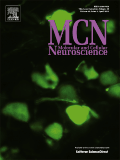
Molecular Neurodegeneration
Scope & Guideline
Fostering innovation in molecular biology and neurology.
Introduction
Aims and Scopes
- Mechanistic Insights into Neurodegeneration:
The journal emphasizes understanding the fundamental biological processes that lead to neurodegenerative diseases, such as Alzheimer's, Parkinson's, and other tauopathies. This includes studies on protein misfolding, aggregation, and cellular stress responses. - Immune System Interactions:
Research often explores the role of the immune system, including microglial activation, neuroinflammation, and the effects of immune modulation on neurodegeneration, highlighting the complex interplay between the nervous and immune systems. - Genetic and Epigenetic Factors:
The journal covers genetic studies, including genome-wide association studies (GWAS) and investigations into specific genetic variants that contribute to neurodegenerative conditions, as well as epigenetic mechanisms that influence disease progression. - Therapeutic Approaches and Biomarkers:
Molecular Neurodegeneration presents studies on novel therapeutic strategies, including drug development, immunotherapy, and biomarker identification, aimed at improving diagnosis and treatment outcomes for neurodegenerative diseases. - Cellular and Animal Models:
The use of advanced cellular and animal models to study disease mechanisms and test therapeutic interventions is a consistent theme, allowing for a better understanding of human neurodegenerative conditions.
Trending and Emerging
- Role of the Gut-Brain Axis:
There is an increasing focus on the gut microbiome's influence on neurodegeneration, particularly how gut-derived metabolites and inflammation affect brain health and disease progression. - Single-Cell and Multi-Omics Approaches:
The application of single-cell sequencing and multi-omics strategies is gaining traction, enabling researchers to dissect cellular heterogeneity and molecular pathways involved in neurodegenerative diseases. - Targeted Protein Degradation:
Emerging strategies involving targeted protein degradation technologies (e.g., AUTOTAC) are being explored as potential therapeutic approaches for clearing pathological protein aggregates. - Advances in RNA Therapeutics:
Research on RNA-based therapies, including antisense oligonucleotides and RNA modulation techniques, is on the rise, reflecting a shift towards innovative therapeutic modalities. - Neuroinflammation and Microglial Function:
A significant trend is the deeper exploration of neuroinflammation and the diverse roles of microglia in neurodegeneration, including their contributions to disease progression and potential as therapeutic targets.
Declining or Waning
- Traditional Neuropathology Studies:
There seems to be a reduced emphasis on classical histopathological studies of neurodegenerative diseases, as research increasingly favors molecular and genetic approaches. - Simple Model Systems:
The use of basic model organisms or systems that do not adequately recapitulate human disease pathology appears to be waning, with a shift towards more complex models that better mimic human neurodegenerative processes. - Generalized Biomarker Research:
Research focused solely on generalized biomarkers without specific context or mechanistic insights is becoming less common, as the field moves towards more targeted and disease-specific biomarker studies. - Broad Immunotherapy Approaches:
There is a noticeable decline in publications focusing on broad-spectrum immunotherapies, with a shift towards more specific and mechanism-based immunomodulatory strategies.
Similar Journals

MOLECULAR AND CELLULAR NEUROSCIENCE
Connecting Theories and Discoveries in NeuroscienceMOLECULAR AND CELLULAR NEUROSCIENCE, published by Academic Press Inc Elsevier Science, is a pivotal journal dedicated to the expansive fields of Cellular and Molecular Neuroscience, providing a platform for the dissemination of innovative research and theoretical advancements since its establishment in 1990. With an ISSN of 1044-7431 and a commitment to high scholarly standards, this journal holds a notable Q2 ranking in key categories such as Cell Biology and Molecular Biology, highlighting its significant impact within the academic community. Although currently not an Open Access journal, it offers a wealth of insightful contributions aimed at fostering understanding and collaboration among researchers, professionals, and students. The journal's ongoing publication trajectory through to 2024 guarantees a continuous flow of cutting-edge research that is critical for addressing complex questions in neuroscience. As it plays a crucial role in advancing our understanding of molecular mechanisms underpinning neural function and pathology, MOLECULAR AND CELLULAR NEUROSCIENCE remains an essential reference for anyone invested in these dynamic fields.

CELLULAR & MOLECULAR BIOLOGY LETTERS
Pioneering Research in Biochemistry and Cell BiologyCELLULAR & MOLECULAR BIOLOGY LETTERS, published by BMC, is a premier open-access journal dedicated to disseminating high-quality research in the fields of Biochemistry, Cell Biology, and Molecular Biology. Established in 1996, the journal has emerged as a leader in its domain, boasting an impressive Q1 ranking across three critical categories as of 2023, reflecting its significant impact within the scientific community. With an ISSN of 1425-8153 and an E-ISSN of 1689-1392, it offers accessible research findings to a global audience, having been open access since 2013. Situated in the United Kingdom, at CAMPUS, 4 CRINAN ST, LONDON N1 9XW, the journal continues to serve as a vital resource for researchers, professionals, and students, contributing to advancements in the understanding of cellular and molecular processes. By providing a platform for original research, reviews, and short communications, CELLULAR & MOLECULAR BIOLOGY LETTERS plays a crucial role in fostering dialogue and collaboration within the scientific community.

JOURNAL OF MOLECULAR NEUROSCIENCE
Illuminating the Pathways of Neural ProcessesJournal of Molecular Neuroscience, published by SpringerNature, is a critical resource for researchers and professionals in the dynamic field of neuroscience. With ISSN 0895-8696 and E-ISSN 1559-1166, this journal has established itself as a key player since its inception in 1989, covering a range of topics within Cellular and Molecular Neuroscience and Medicine (miscellaneous). Its impressive rankings, including being placed in the Q2 quartile for Medicine and Q3 for Cellular and Molecular Neuroscience, underscore its scholarly impact, featuring innovative research that informs and advances our understanding of neural processes. The journal does not currently operate under an open-access model, providing rich, peer-reviewed content geared towards academics and professionals seeking comprehensive analyses and breakthroughs in molecular neurobiology. With a publication window extending to 2024, the Journal of Molecular Neuroscience remains dedicated to enhancing the scientific community's knowledge landscape, making it an essential reference for those passionate about unraveling the complexities of the nervous system.

NATURE NEUROSCIENCE
Exploring Innovative Insights in NeuroscienceNATURE NEUROSCIENCE is a premier journal published by NATURE PORTFOLIO, focusing on cutting-edge research in the field of neuroscience. With an esteemed impact factor that reflects its significance in the academic community, this journal occupies an exceptional place in the 2023 Q1 category for neuroscience (miscellaneous) and boasts a leading Scopus rank of #1 out of 113 in general neuroscience, placing it within the top 1st percentile. Since its inception in 1998, NATURE NEUROSCIENCE has consistently delivered high-quality, peer-reviewed articles that contribute to our understanding of the nervous system, driving innovation and scholarship across disciplines. Although it does not offer open access, the journal remains a vital resource for researchers, professionals, and students seeking to stay at the forefront of neuroscientific discovery and discussion. Its editorial commitment to excellence ensures that it continually shapes the trajectory of neuroscience research well into 2024 and beyond, making it an indispensable asset for anyone passionate about the brain and its complexities.

NEUROPATHOLOGY AND APPLIED NEUROBIOLOGY
Elevating the Discourse in Pathology and NeuroscienceNEUROPATHOLOGY AND APPLIED NEUROBIOLOGY is a premier journal dedicated to advancing the understanding of the intricate relationships between pathology and neurobiology. Published by Wiley since 1975, this journal has established itself as a crucial resource for researchers, clinicians, and students interested in the latest insights and developments in the fields of pathology, neurology, and neuroscience. With an impressive history of convergence extending to 2024, it boasts a Q1 ranking in multiple categories including Histology, Neurology, and Pathology, reflecting its high impact and reputation in the academic community. Additionally, it ranks 18th out of 208 in Pathology and Forensic Medicine with a remarkable 91st percentile, signifying its relevance and influence in medical research. While not open access, this journal provides valuable content that contributes significantly to the ongoing discourse in neurobiological advancements and is a vital reference for those engaged in this dynamic field.

NEUROCHEMICAL RESEARCH
Catalyzing knowledge in cellular and molecular neuroscience.NEUROCHEMICAL RESEARCH, published by Springer/Plenum Publishers, is a pivotal journal in the fields of biochemistry, neuroscience, and cellular and molecular studies. With an impressive impact factor that positions it within the prestigious Q1 category in Biochemistry and Medicine and Q2 in Cellular and Molecular Neuroscience, it provides a robust platform for the dissemination of cutting-edge research findings. Since its inception in 1976, the journal has played a crucial role in bridging the gap between neurochemical processes and neurological health, making significant contributions to our understanding of brain function and disease. Researchers and professionals are encouraged to engage with a wealth of high-quality articles that not only advance the field but also inform clinical practices. Located in the heart of New York, the journal continues to uphold its reputation as a leader in promoting innovative research that is essential for both academic and applied sciences.

Molecular Brain
Illuminating the Pathways of Molecular Brain ResearchMolecular Brain is a prestigious open-access journal published by BMC, dedicated to advancing the field of neuroscience with a particular focus on cellular and molecular mechanisms. Since its inception in 2008, the journal has been committed to disseminating high-quality research that explores the intricate workings of the brain, particularly in areas related to cellular and molecular neuroscience. Located in the heart of London, England, Molecular Brain has garnered significant recognition in the academic community, boasting a 2023 categorization in the Q2 quartile for both Cellular and Molecular Neuroscience and Molecular Biology, reflecting its growing influence and relevance in these fields. With its Scopus ranks placing it in the top 32% and 38% of its respective categories, the journal serves as an essential platform for researchers, professionals, and students alike, encouraging collaboration and knowledge-sharing through its accessible online format.

eNeuro
Innovating the future of neurobiology, one study at a time.eNeuro is a prominent open-access journal published by the Society for Neuroscience, dedicated to advancing the field of neuroscience through the dissemination of high-quality research. Launched in 2015, it reflects its commitment to accessibility by providing a platform for innovative studies and advancements in neurobiology. The journal holds a strong reputation, achieving a Q1 ranking in Medicine (miscellaneous) and a Q2 in Neuroscience (miscellaneous) as of 2023, with Scopus rankings placing it at #56 out of 113 in General Neuroscience, marking it in the 50th percentile. With its convergence to cover articles from 2014 to 2024, eNeuro continues to serve as a vital resource for researchers, professionals, and students alike, offering a comprehensive hub for the latest discoveries and theoretical developments in neuroscience. As part of its mission, eNeuro aims to foster collaboration and inspire the academic community with openly accessible content, making significant contributions to scientific discourse.

Translational Neurodegeneration
Pioneering Open Access Research in NeurodegenerationTranslational Neurodegeneration, an esteemed journal in the field of neuroscience, is published by BMC and has been an open access platform since 2012, delivering high-quality research from its base in the United Kingdom. With an impressive impact factor reflecting its significant contributions, this journal focuses on critical advancements in cellular and molecular neuroscience, cognitive neuroscience, and clinical neurology, boasting a Q1 ranking across all these categories as of 2023. Researchers and professionals benefit from its extensive reach, characterized by exceptional Scopus rankings that place it in the top percentile of its field. The journal serves as a vital resource for academics and healthcare practitioners alike, aiming to bridge the gap between laboratory discoveries and clinical applications, thereby enhancing understanding and treatment of neurodegenerative diseases. With its commitment to open access, Translational Neurodegeneration ensures that its published research is accessible to a global audience, promoting collaboration and knowledge exchange within the scientific community.

JOURNAL OF COMPARATIVE NEUROLOGY
Exploring the Depths of Neural DiversityThe Journal of Comparative Neurology, published by Wiley, stands as a cornerstone in the field of neuroscience since its inception in 1911. With an ISSN of 0021-9967 and an E-ISSN of 1096-9861, this esteemed journal spans a comprehensive scope of comparative neuroanatomy, neurophysiology, and neural development, providing critical insights into the intricate workings of nervous systems across species. The journal has earned a prestigious Q2 ranking in the category of general neuroscience for 2023, showcasing its substantial impact, reflected in its Scopus ranking of #47 out of 113 journals in its field. Researchers and professionals examining evolutionary patterns, neural structure functions, and comparative studies will find this journal an invaluable resource. Although it does not provide open access, its rigorous peer-review process ensures the publication of high-quality research that is crucial for advancing knowledge in comparative neurobiology. With a commitment to fostering scholarly exchange, the Journal of Comparative Neurology remains dedicated to exploring the complexities of the nervous system through a comparative lens, making it a vital platform for the global neuroscience community.